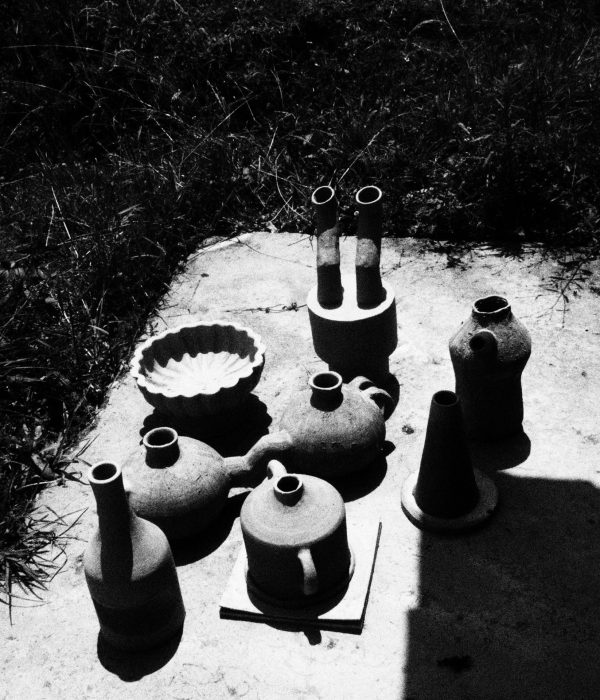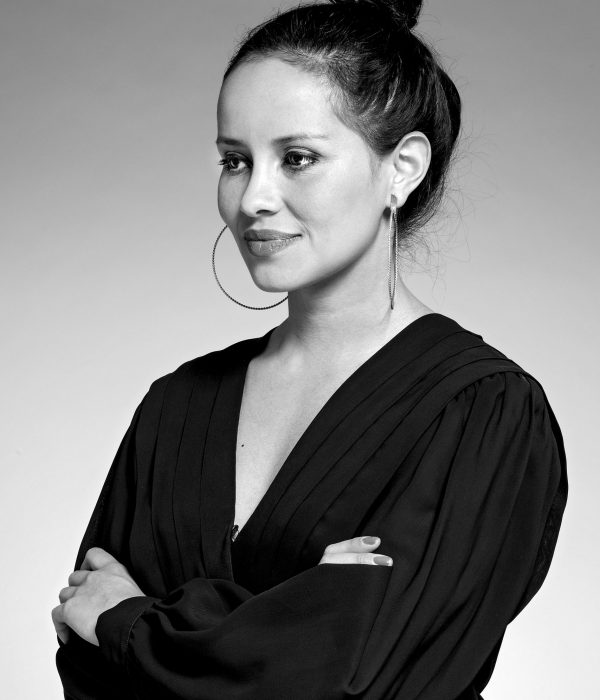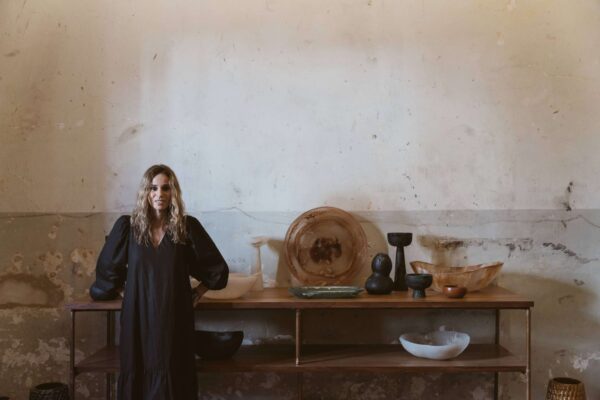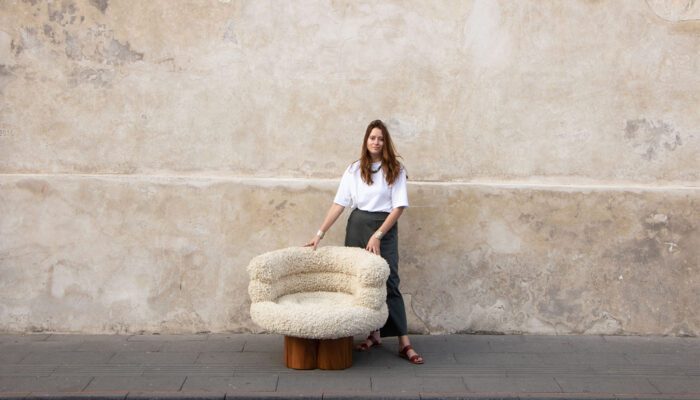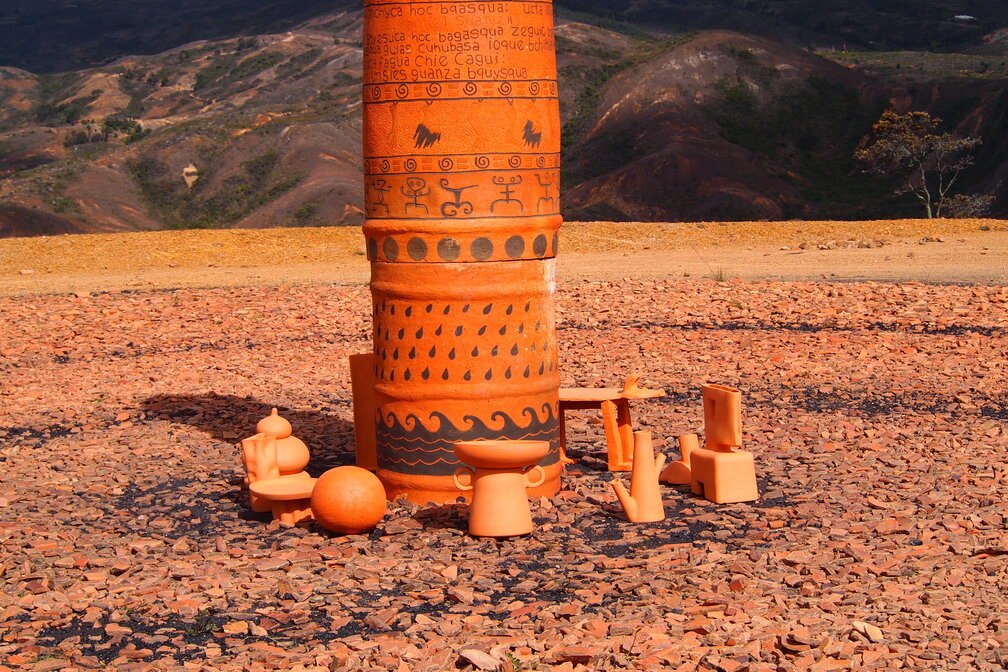
A COFFEE WITH
NATALIA CRIADO: “CONNECTING WITH EARTH, THAT’S THE BEAUTY OF IT”
Name: Natalia Criado
Occupation: Industrial designer, Co-founder Alone Together Ráquira
Birthplace: Bogotá, Colombia
Zodiac Sign: Pisces
Instagram: @nataliacriado
LATINNESS: Tell us about Natalia Criado prior to Alone Together Ráquira.
NATALIA: I studied Industrial Design at Los Andes, then moved to Italy where I finished my degree. Then I came back here [Colombia], and my dream was to work with artisans. I always wanted to travel around the world from artisan to artisan, but my parents said it was impossible. After Italy, I came to Colombia and started a jewelry brand called Little Lucia, through which I experimented with metals and materials. Later, my brother and I started an eyewear brand called Around Eyewear, which was more commercial, until finally I said ‘I want to return to objects’. I started feeling like there was so much jewelry out there, and I wanted to return to what came before, to the object. I went to Italy with a collection called Joyas en Casa (Jewels at Home), which was about bringing jewels to the table. I started with flatware bound with metal because I had a lot of experience with metal, and from there I said, ‘Ok, I have the flatware, now I’m missing the cups, so I need glass’. I started working with Murano artists for the glass. I was missing centerpieces, so I started working on those, and just like that, I started building a team of Italian artisans, and learning, and then participating in the Salone del Mobile, which always helped me in connecting with people. Last year, for example, I made a collection of candle lids for Diptyque, and then a colección of smalls spoons, which they sell on their website, Diptyque Bazaar, and I also sell on websites like 1stdibs and Artemest, which are Italian and international design sites.
LATINESS: What do you consider your first big break in the industry?
NATALIA: I created a jewelry collection that I presented in Japan because I was invited to a fair called Designboom. It was in Tokyo, and they invited me with this collection, which was inspired in teacups, something very cute, completely unrelated with what I create today. It was from there that I started climbing the ladder, but that was my first achievement. I was very young, and it was rewarding for me.
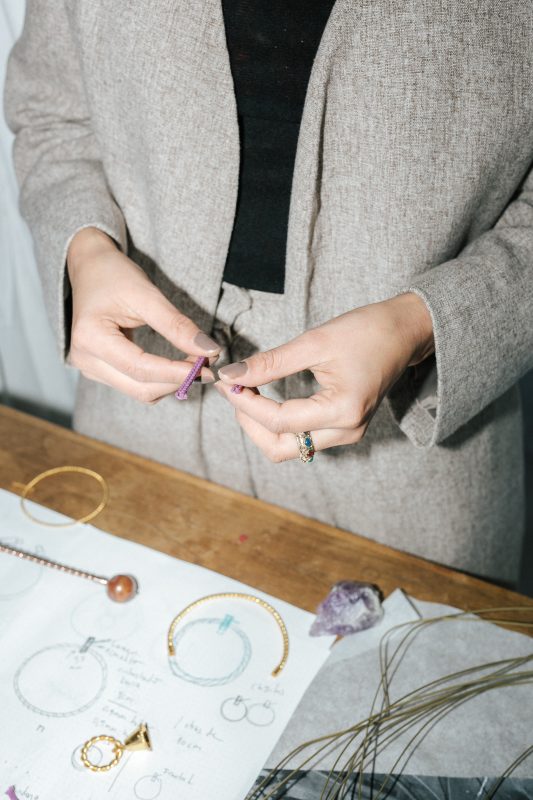

LATINNESS: Let’s talk about Alone Together Ráquira. Would you say now you’ve accomplished your dream of working with Colombian artisans?
NATALIA: Through my travels and such, I always thought that I needed to do something in Colombia, to work with Colombian artisans, and that’s what brought me here at this moment.
LATINNESS: As a Colombian living and working in Italy with your partner Pietro Minelli, how did you two end up spending quarantine in Ráquira, Colombia?
NATALIA: Several things occurred, it’s been quite an experience. We arrived the first week, and they didn’t want us in the town because Pietro was Italian, of course, but we had already been here [Colombia] for a while. In reality, we were here since end of January as it was my birthday and Pietro came to visit me. We travelled to Ráquira, and as soon as people found out he was Italian, they didn’t even want to look at him. We had to hide, and eventually went to the Police to explain, we literally thought they were going to lynch Pietro. The lady who owned the house we were staying in, kicked us out. Until finally, a woman who heard our story said, ‘What? I’ll help you. You can come stay in my house, which is on a mountain, it’s not a problem.’ So we stayed there in this beautiful, peaceful house. She is a Literature professor, and so she has a ton of research on Ráquira’s ceramics. We’ve done somewhat of a residency in Ráquira. We have a bunch of books on the Muisca culture, how they arrived here, all about Ráquira craftsmanship, the different techniques, which techniques each craftsman practices, and se we decided to work with Don Reyes, who is the person I am with now. I already knew him, and he helped us from the beginning, plus his workshop is open. Not all the workshops are open at this moment. Here, we’ve met a lot of people with different techniques, rural people from up in the mountains who have been working a specific technique their whole lives, which is handmade. It’s really beautiful and has been so enrichening.
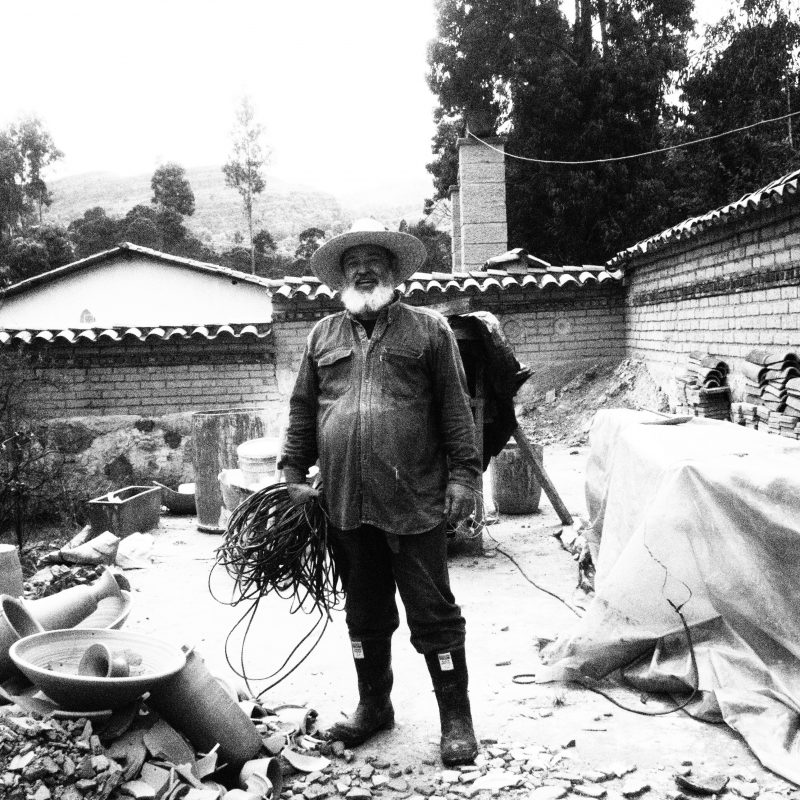
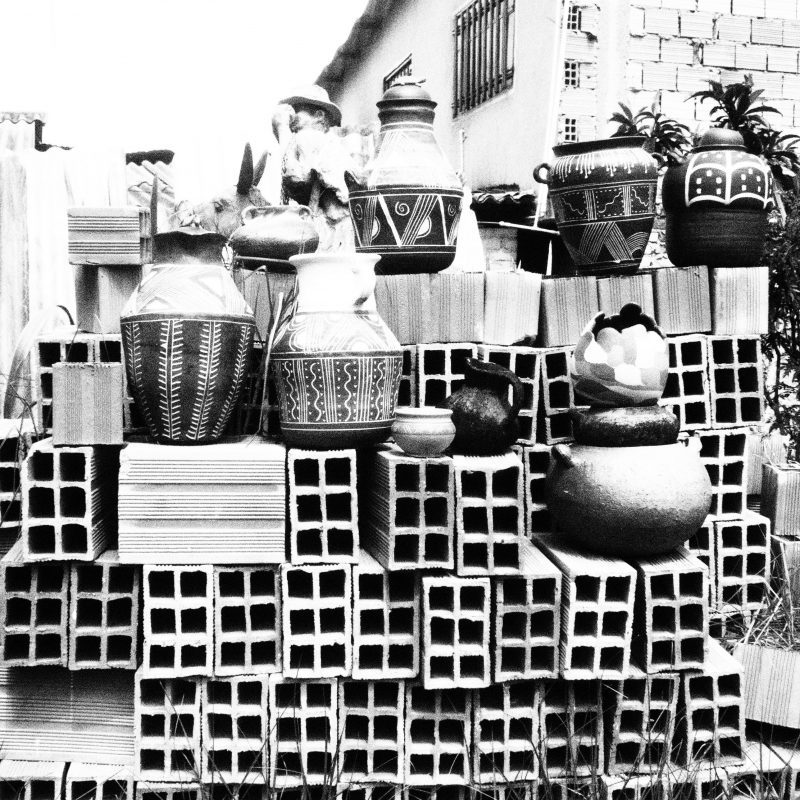
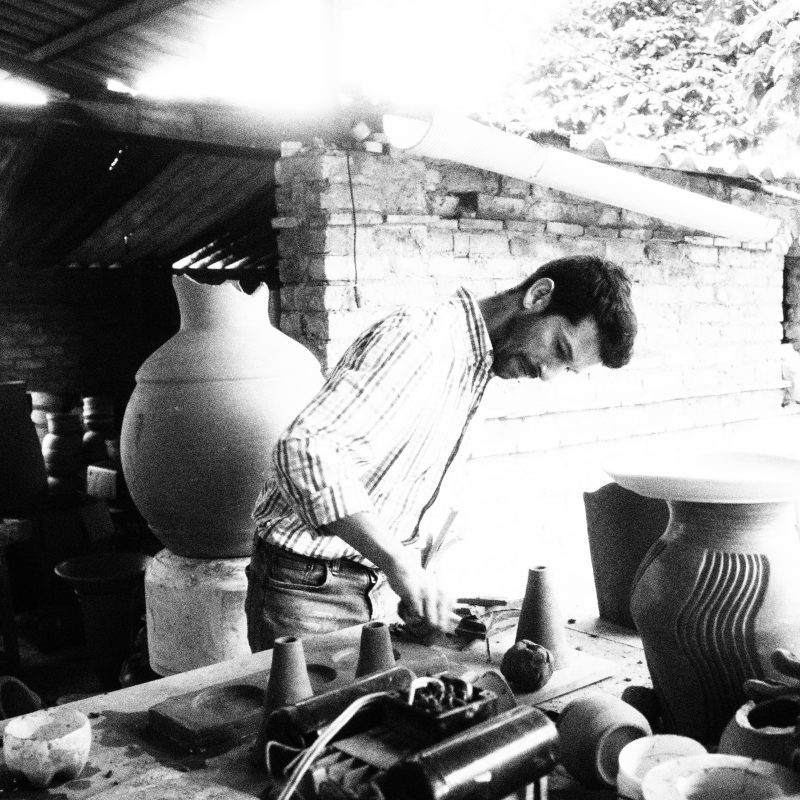
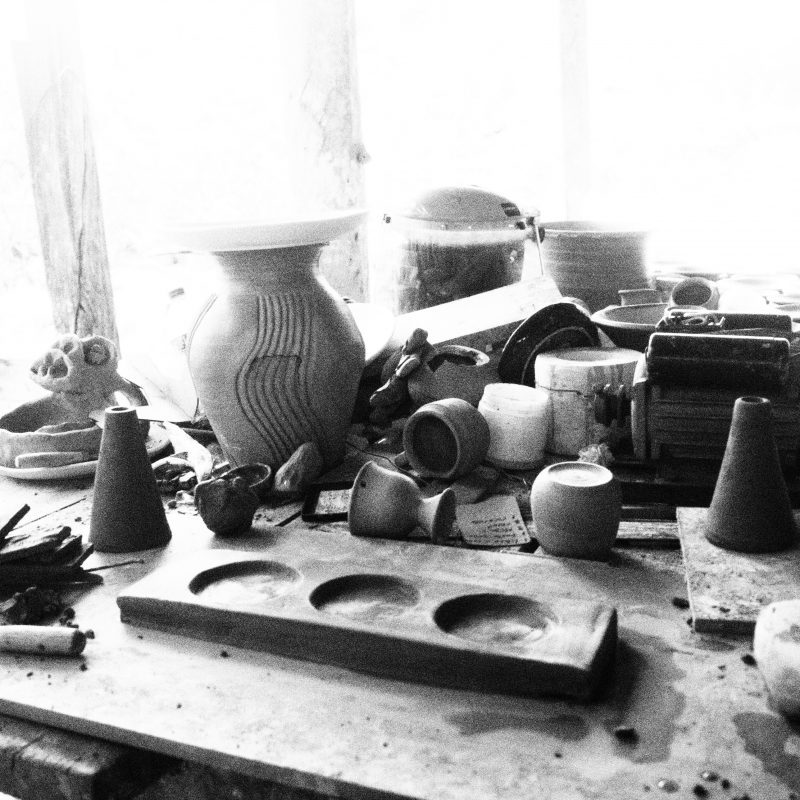
LATINNESS: Can you walk us through the process behind each piece?
NATALIA: First, the artist gets in touch with us and sends us their design. We then communicate this to the craftsmen, and work as a team. There is an artisan who is in charge of the potter’s wheel, and another who handles sculpting. We handle the finishing of the piece. I’m the one who speaks with the artisan to explain assignments. Pietro does more of the polishing of the final piece, and explaining how it should look. I’ll often ask him, like ‘What do you think if we do it like this, or we change this?’ In any case, we both do a little of everything, which has been what’s nice about it, it’s team work, because the artisans have taught us and we have taught them. A friend of ours joined in on the project, Caterina Ponti, who is the great-grandchild of Gio Ponti, a well known architect. She was intense from the beginning. She was the first one to send us her sketch and was always super on top of it. We told her ‘You can be the Project Manager’ and so, at the moment, she is in charge of communication with the artists, and later, of the collection with the galleries in Milan. Right now, I have to manage the connections in Colombia, and then send them to her. We have to wait for now because it’s a difficult time, and we don’t know when we will be able to send the pieces, or perhaps it will have to be a virtual tour.
LATINNESS: What’s the timeline like for the creation of one piece?
NATALIA: One piece, around three days, but there are days in which we are super dedicated, we wake up early and are working since 6 AM. Then there are others when everything is sculpted, so we don’t need to use the potter’s wheel, just the clay plate, and so we start to construct and mold…
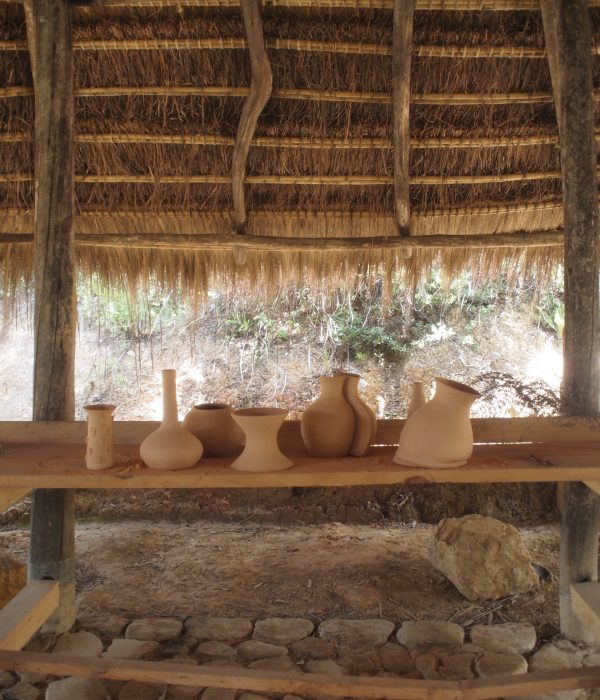
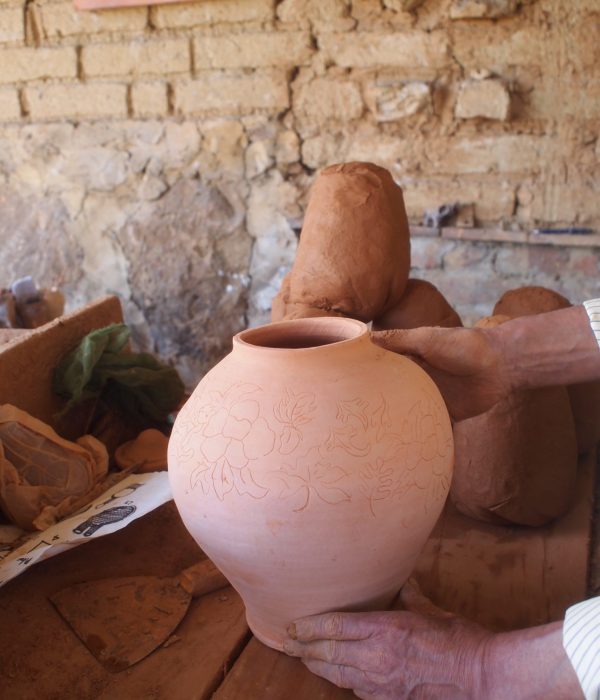
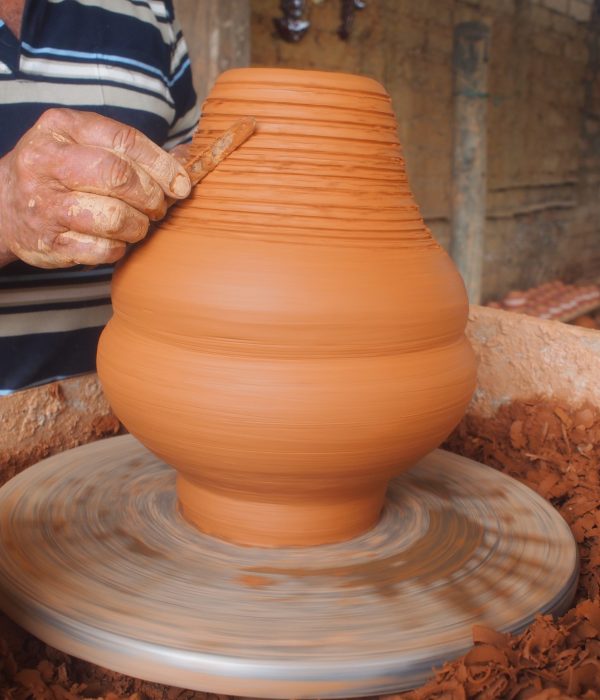
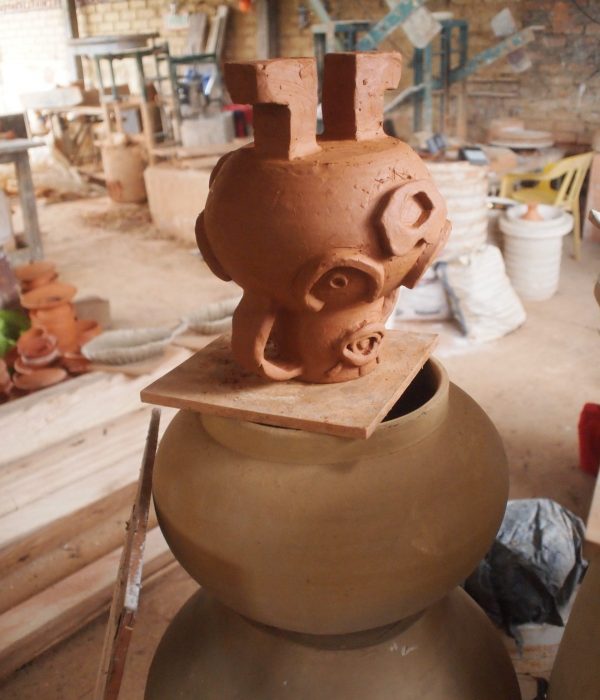
LATINNESS: How many pieces have you created at this moment?
NATALIA: Right now we have 70, and in terms of nationality, there is Brazil, Mexico, Argentina, France, Germany, India, Japan… So it’s a map, where like, now they are showing maps of coronavirus, well this is a map of Alone Together. I also think that it’s a way to transport people here. In some way, I think this will help people to learn more about Colombia, because many had no idea…
LATINNESS: Have you considered future plans for this project?
NATALIA: First, we want to make a catalog with all the artists and their biographies. Second, focus on the side of institutions. Since all the pieces involve a lot of work, we want it to be something more artistic. People have asked us if we can sell the pieces. It’s a possibility, but we haven’t gone that far yet since there is the whole issue of creating a contract with the artists and receiving their approval to sell. Basically, what we are doing now is a collection of samples for exhibition.
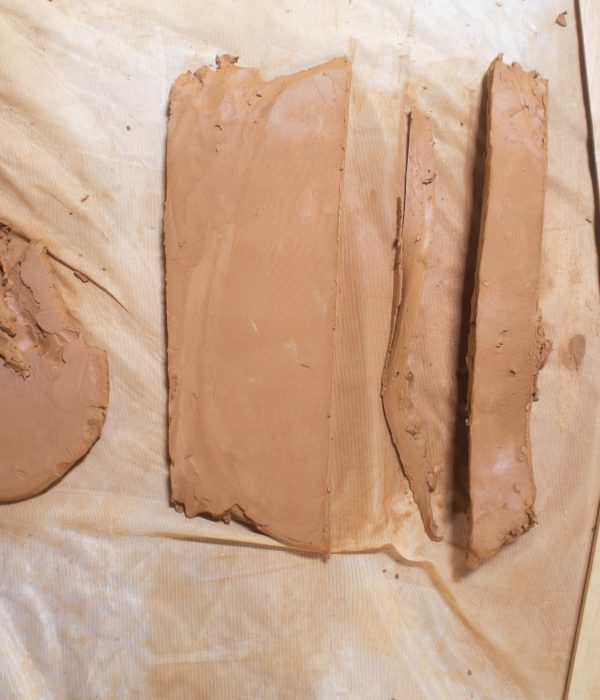
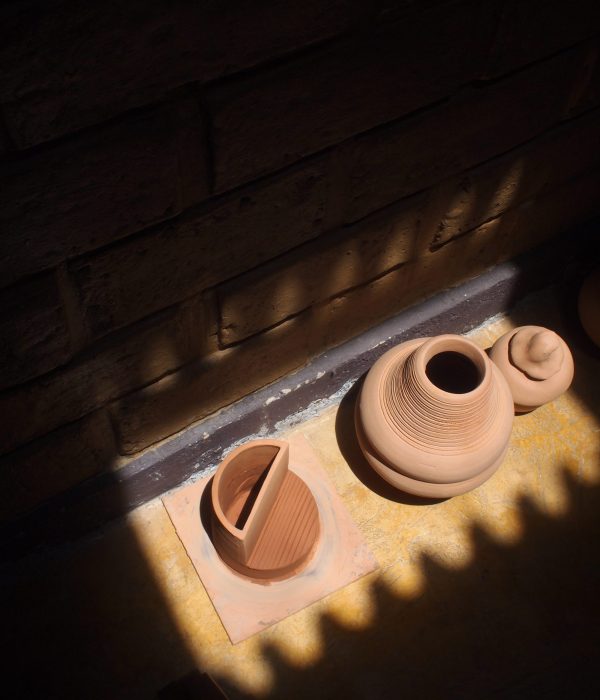
LATINNESS: Tell us more about this exhibition. Where will it be presented?
NATALIA: The first step after this week will be a local viewing with the people here. With the artisans, the mayor who knows we are here, and everyone who knows about the project. After that, we want to take it to Bogota and then Milan. The final destination will be Milan, and well, it’s an exhibition that tells the story of Ráquira’s craftsmanship, of the craftsmen. All the people who collaborated with us have a story behind their piece. For example, here we have… this is a tea cup from a girl in London. This is from a girl in Bogota. Everything was done through WhatsApp messages, like illustrations. This is a guy from Paris. All the pieces will remain in this color because since the project is called Alone Together, all the pieces need to be connected.
LATINNESS: Have you created pieces for yourselves?
NATALIA: We are creating cups for ourselves, because we did our own house. We took advantage of the material, which is the beauty of it, connecting with the Earth. It’s about returning to the past because it’s part of this history here, the indiginous people made their own objects for daily use. It’s the story we’ve been telling through our instagram @alonergether_raquira.
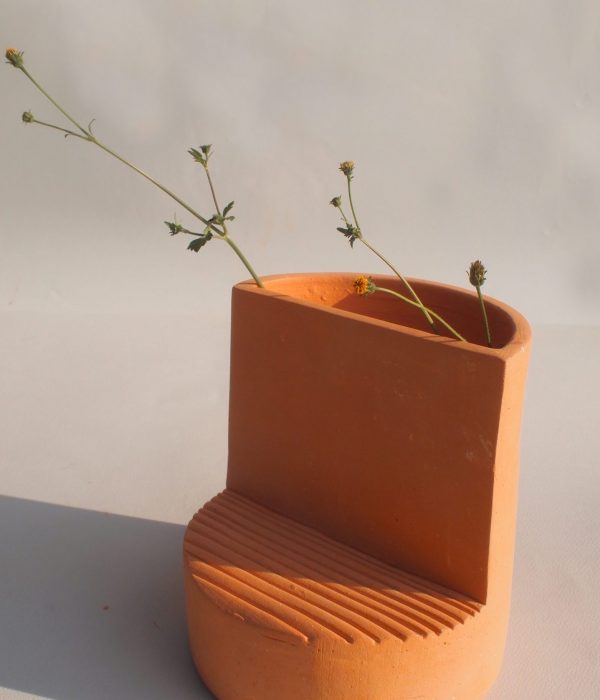
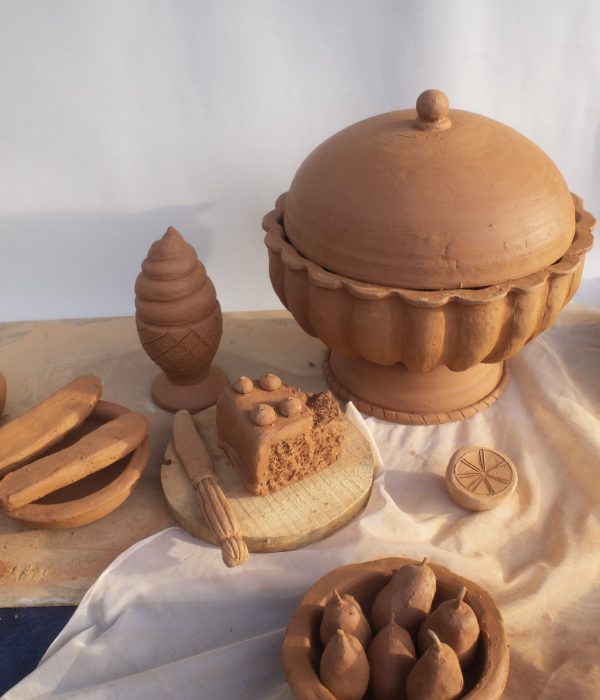
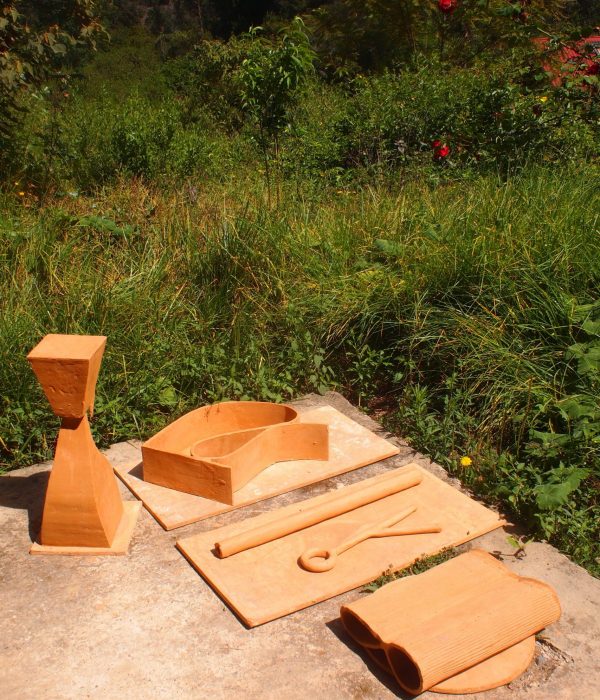
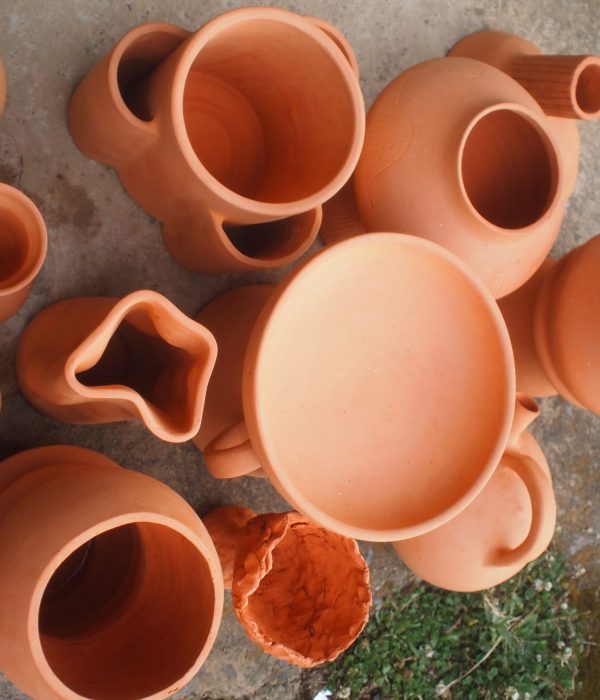
LATINNESS: Before the pandemic, this workshop created pots exclusively?
NATALIA: Yes, of course, for Colombia. Don Reyes helped me with a project I proposed last year for the Salone del Mobile, but when I arrived to Italy, I changed everything. Precisely because of the finishings, with importation the finishings need to be perfect and polished. That’s what we are trying to do with the pieces now so that they come out super polished. There are some which the artist wanted something super handmade, and so we left it like that, but the idea is to try to make them all perfect.
LATINNESS: Have you considered replicating this in another city?
NATALIA: It’s more of a secret, but yes, we’ve thought of doing Alone Together Sicily, where there is also a history of ceramics, and we have a friend with a workshop there, and going like that, by different cities: Alone Together Guainía, where they work with hemp, and to start organizing different artists.
LATINNESS: What are you doing to stay positive? You look positively radiant in Ráquira.
NATALIA: Creating and being with the artisans is very beautiful, you learn a lot of things. These things people say about how we need to return to the land, well, here we are. It’s like if we’re in the future, but in reality it’s like the past, because the people here are sowing all the time. They’re concerned, of course, with what’s going to happen, of course there is tension, and everyone wears a face mask, but that’s all, being here is beautiful and it fulfills you.
